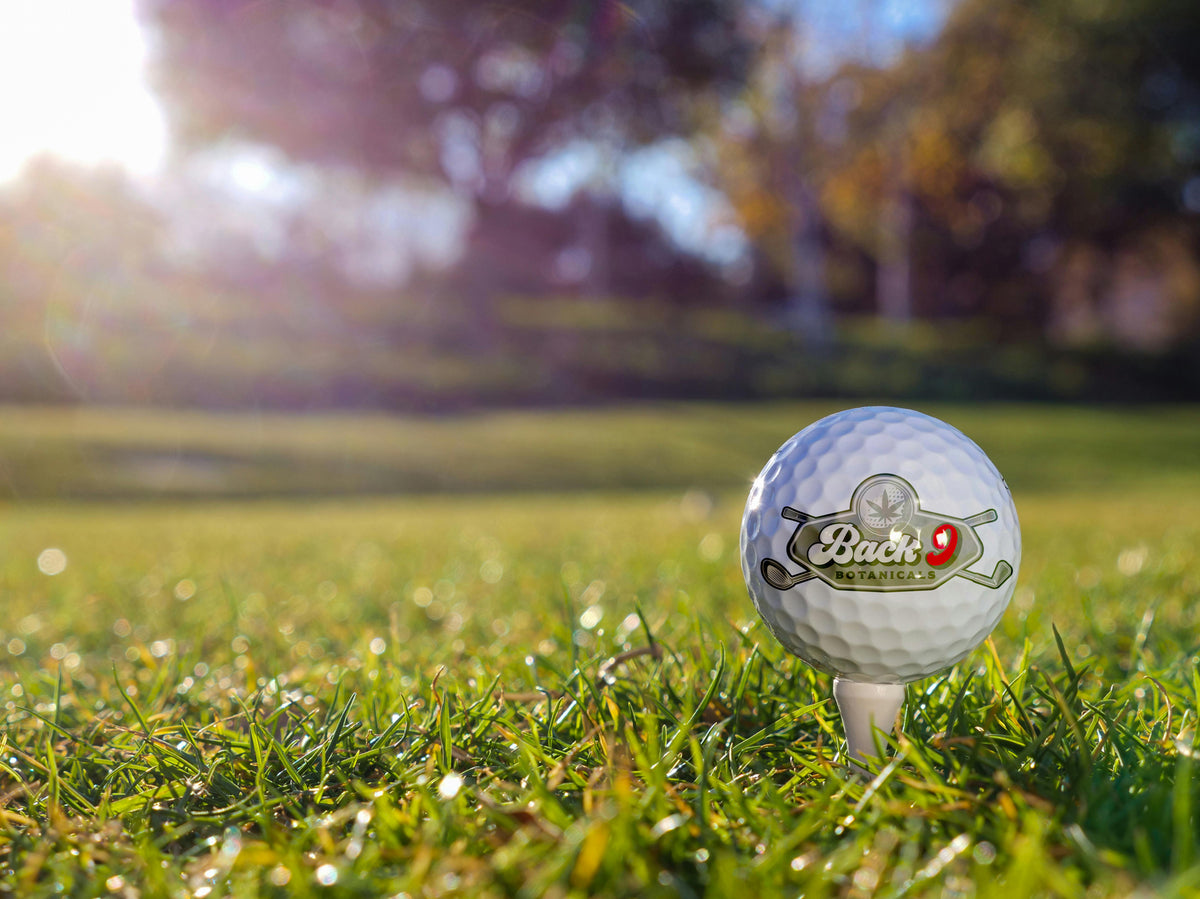 Ever wonder if rubbing a CBD cream or stick on your skin gets it into your bloodstream? You're not alone. People are curious about how topical CBD works and if it can really be absorbed into the blood. This article digs into the science of CBD absorption through the skin, comparing topical and transdermal methods, and explores the benefits and challenges of using these products. Let's break it down and see what really happens when you apply that CBD salve.
Ever wonder if rubbing a CBD cream or stick on your skin gets it into your bloodstream? You're not alone. People are curious about how topical CBD works and if it can really be absorbed into the blood. This article digs into the science of CBD absorption through the skin, comparing topical and transdermal methods, and explores the benefits and challenges of using these products. Let's break it down and see what really happens when you apply that CBD salve.
Key Takeaways
- Topical CBD mainly interacts with the skin's surface and doesn't reach the bloodstream.
- Transdermal CBD is designed to penetrate deeper and enter the bloodstream.
- Topical CBD can provide localized relief for pain and skin conditions.
- The effectiveness of CBD absorption depends on factors like concentration and skin health.
- Choosing between topical and transdermal CBD depends on your needs and desired effects.
Understanding Topical CBD Absorption
How Does CBD Interact With the Skin?
CBD interacts with the skin primarily through the sebaceous glands. These glands produce sebum, an oily substance that keeps our skin flexible and resilient. When you apply CBD creams onto your skin, the CBD molecules penetrate the sebaceous glands via hair follicles. This interaction helps activate cannabinoid receptors, enhancing the soothing effects of other pain-relieving agents like histamine dihydrochloride. However, because the CBD doesn't go much deeper than these glands, it's often recommended to use a generous amount to achieve the desired effect.
The Role of the Stratum Corneum in CBD Absorption
The stratum corneum is the outermost layer of the skin and plays a crucial role in CBD absorption. This layer acts as a barrier, controlling what enters and exits the skin. When you apply CBD topicals, the CBD is absorbed by the stratum corneum, reaching the sebocytes and sebaceous glands beneath. However, this layer also limits how far CBD can penetrate, preventing it from entering the bloodstream.
Limitations of Topical CBD Products
Topical CBD products are designed to provide localized relief and are not intended to enter the bloodstream. This means they are effective for targeting specific areas but won’t offer systemic benefits. Some limitations include:
-
Limited penetration: Traditional topicals do not pass beyond the epidermis, so they don't affect the bloodstream. However, some formulations contain permeation enhancers like DMSO, which can increase absorption beyond the skin’s surface, allowing deeper penetration.
-
Surface-level action: Most topicals are ideal for addressing skin issues or muscle soreness, but products with absorption enhancers can extend relief to deeper tissues.
-
Need for generous application: To maximize effectiveness, a larger amount of product may be necessary. However, topicals with enhanced absorption may work more efficiently with smaller amounts.
Topical CBD is great for localized relief but doesn’t typically enter the bloodstream due to the skin’s natural barrier. However, hybrid formulations containing penetration enhancers—like the Back 9 Botanicals CBD Topical Therapy Salve Stick—bridge the gap between traditional topicals and transdermal CBD.

The Science Behind Transdermal CBD

What Makes Transdermal CBD Different?
Transdermal CBD is not your regular cream or balm. Unlike topical CBD, which stays on the surface, transdermal products are designed to penetrate deeper into the skin. The key difference is that transdermal CBD can enter the bloodstream, offering more systemic effects. This is possible because these products often contain special ingredients called permeation enhancers that help CBD move through the skin's layers.
A Hybrid CBD Solution: Topical Relief with Transdermal Benefits
Some CBD products, like Back 9 Botanicals CBD Topical Therapy Salve Stick, blur the line between topical and transdermal solutions. While this salve offers localized relief like traditional topicals, it also contains DMSO, a well-known permeation enhancer that helps ingredients penetrate deeper into the skin. Combined with Caryophyllene and Humulene, which support absorption and anti-inflammatory benefits, this formulation may allow some CBD to reach deeper tissues while still providing surface-level relief. This makes it an excellent option for those who want a fast-acting, targeted salve with enhanced penetration capabilities.
Potential Benefits of Transdermal CBD
Transdermal CBD can offer several advantages. Here are a few:
-
Consistent Dosage: The slow release of CBD ensures a steady dosage over time.
-
Non-Invasive: No need to swallow pills or apply creams multiple times a day.
-
Systemic Relief: Ideal for conditions that require CBD to affect deep within the muscles, not just a surface area.
Transdermal CBD's ability to enter the bloodstream makes it a versatile option for many users seeking broader relief. While topical applications are great for targeting specific areas, transdermal methods open up new possibilities for those needing more comprehensive benefits.

Comparing Topical and Transdermal CBD
Key Differences Between Topical and Transdermal CBD
When it comes to CBD products, understanding the distinction between topical and transdermal applications is crucial. Topical CBD products are designed to provide relief to a specific area of the skin without entering the bloodstream. These include regular creams, balms, and lotions that you apply directly where you want relief, like sore muscles or inflamed skin. On the other hand, transdermal CBD products are formulated to penetrate deeper into the skin and reach the bloodstream. This allows the CBD to have a systemic effect, potentially offering broader benefits.
Factors Influencing CBD Absorption Through the Skin
Impact of CBD Concentration on Absorption
The concentration of CBD in a product plays a significant role in how well it gets absorbed. Higher concentrations often mean more CBD is available to interact with the skin. But it’s not just about slapping on a thick layer. The skin can only take in so much at a time, so finding the right balance is key. A product with a higher concentration might be more effective for localized relief, while a lower concentration might be better for general use.
Role of Carrier Oils in CBD Absorption
Carrier oils are like the unsung heroes in CBD products. They help CBD spread evenly and make it easier for the skin to absorb. Common oils like coconut or jojoba not only moisturize but also enhance CBD's absorption. Some oils are better at this than others, so it’s worth checking the label. A good carrier oil can make a big difference in how well the CBD works.
Skin Health and Its Effect on CBD Penetration
Your skin’s condition can also affect how well CBD gets absorbed. Healthy, well-hydrated skin is better at soaking up CBD than dry, flaky skin. If your skin is damaged or inflamed, it might not take in CBD as effectively. Keeping your skin in good shape can help maximize the benefits of CBD topicals. So, regular moisturizing and avoiding harsh chemicals can make your skin more receptive to CBD.
The skin, being the largest organ, is a great spot for CBD absorption. When you rub CBD topicals on your skin, it gets taken up by the outer layer of skin, which is called Stratum Corneum.

Benefits of Using CBD Topicals

Localized Relief for Pain and Inflammation
CBD topicals are known for their ability to provide targeted relief. When you apply a CBD-infused cream or balm, it works directly on the area where it's applied. This localized action can be particularly helpful for easing muscle soreness or joint pain after a workout. Because it doesn’t enter the bloodstream, it focuses all its soothing properties right where you need them.
CBD's Role in Skin Hydration and Protection
One of the standout features of CBD topicals is their ability to hydrate and protect the skin. The CBD molecules interact with the sebaceous glands, which are responsible for producing sebum. This interaction helps maintain skin moisture, keeping it supple and less prone to dryness. Moreover, many CBD topicals come with additional ingredients like aloe vera or shea butter, enhancing their moisturizing effects.
Potential Anti-Microbial Properties of CBD
CBD topicals may also offer anti-microbial benefits. Some research suggests that CBD can combat bacteria and fungi that are common culprits in skin infections. This makes CBD-infused lotions and creams a potential ally in maintaining skin health. While more studies are needed, the initial findings are promising.
Applying CBD topicals could be a game-changer for those dealing with localized discomfort or skin issues. Not only do they offer relief right where you need it, but they also come packed with skin-loving ingredients that promote overall skin health.
Challenges and Considerations for Topical CBD Use
Why Topical CBD Doesn't Enter the Bloodstream
Topical CBD products are designed to work on the skin's surface. Unlike transdermal CBD, which is formulated to penetrate deeper into the skin and enter the bloodstream, topicals remain on the outer layers. This means they are great for localized relief but won't deliver CBD's systemic effects. The skin acts as a natural barrier, preventing many substances, including CBD, from entering the bloodstream.
Cost Implications of High-Concentration CBD Products
When choosing a CBD topical, the concentration of CBD can significantly impact the price. Higher concentrations might provide more potent effects but come with a higher price tag. For those using CBD topicals regularly, this can add up, especially if opting for high-concentration products. Consider your needs and budget when selecting a product.
Potential Side Effects of CBD Topicals
While most people don't experience significant side effects from CBD topicals, it's still important to be cautious. Common side effects might include skin irritation or allergic reactions, especially if you have sensitive skin.
While CBD topicals are generally considered safe, always do a patch test before applying a new product extensively. This can help avoid any unexpected skin reactions.
In summary, while CBD topicals offer a range of benefits, it's crucial to understand their limitations and potential challenges. Whether you're seeking localized relief or considering the cost, being informed can help you make the best choice for your needs.
Wrapping It Up – Does Topical CBD Enter the Bloodstream?
So, does topical CBD reach your bloodstream? In most cases, no. Regular CBD creams and lotions work on the skin’s surface, interacting with cannabinoid receptors but not penetrating deeply enough for systemic effects.
However, some formulations contain absorption enhancers like DMSO, allowing deeper penetration beyond the skin’s surface. These hybrid topicals, like the Back 9 Botanicals CBD Topical Therapy Salve Stick, provide both localized relief and enhanced absorption, making them a middle ground between standard topicals and transdermal CBD.
If you need CBD to reach your bloodstream, transdermal products are the way to go. But for most people, the right topical—or a hybrid formula—delivers the relief they need, exactly where they need it.

Frequently Asked Questions
How long do the effects of CBD topicals last?
The effects of CBD topicals can last anywhere from a few hours to a day, depending on the concentration and the area of application.
Is it safe to use CBD topicals on my face?
Yes, CBD topicals are generally safe for facial use, but it's best to do a patch test first to ensure there's no allergic reaction.
How should I store my CBD topicals?
Store CBD topicals in a cool, dry place away from direct sunlight to maintain their effectiveness.
What should I look for when choosing a CBD topical product?
Look for products with clear labeling of CBD concentration, third-party testing, and natural ingredients to ensure quality and safety.
Can CBD topicals help without entering the bloodstream?
Yes, CBD topicals can provide localized relief for pain and inflammation by interacting with cannabinoid receptors in the skin.


 Cart (0 items)
Cart (0 items)





